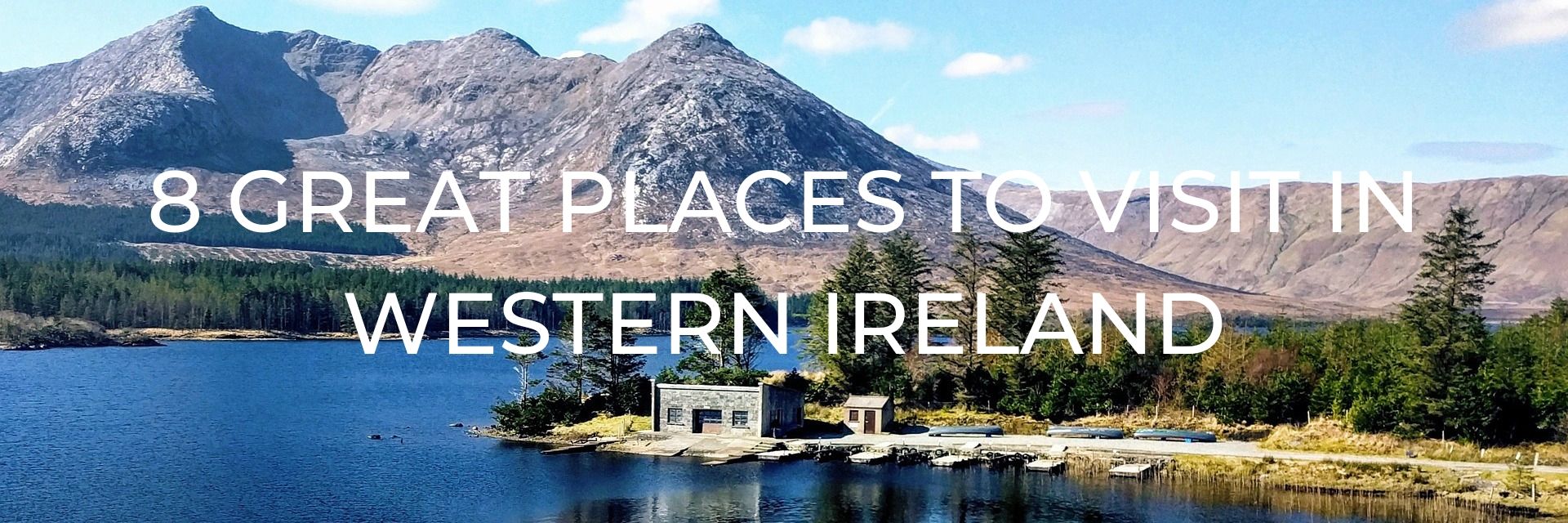
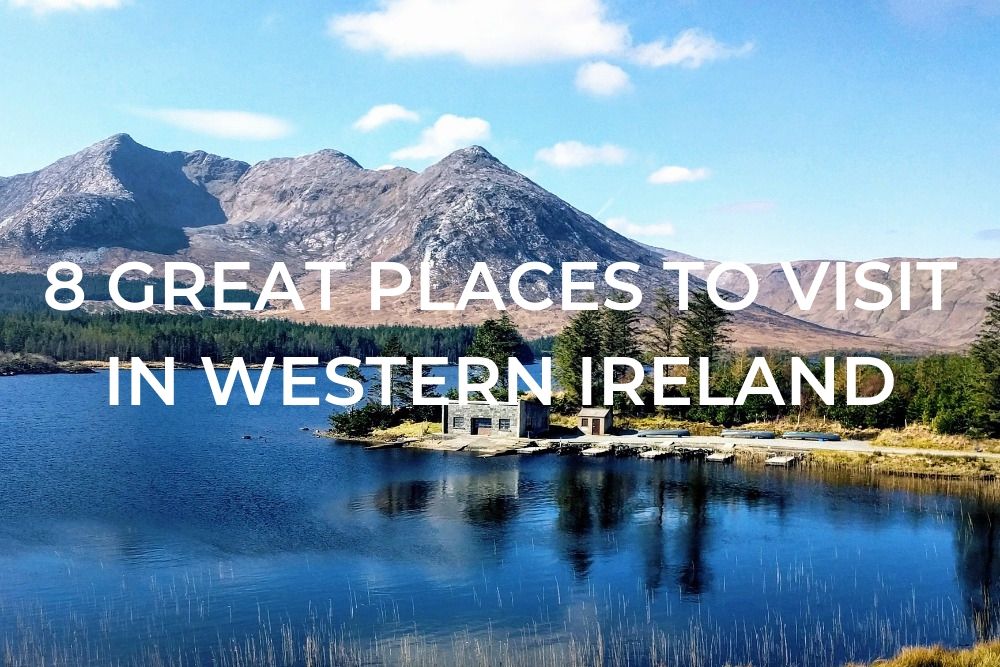
Oliver Cromwell once famously declared that Irish rebels could “…go to Hell or to Connaught” which suggests he didn’t think much of western Ireland, likely due to its rainy, isolated outposts of barren limestone and water-logged bog. But don’t let Cromwell’s opinion stop you… western Ireland is definitely worth visiting!
In this region of Ireland, the influence by the British was minimal, which leaves it firmly Gaelic and true to its roots. The traditional Irish spirit is found in local speech, music, crafts, and sports in the tiny, scattered communities.
Want to save this for later? Click the Pinterest button on the left for a pinnable image!
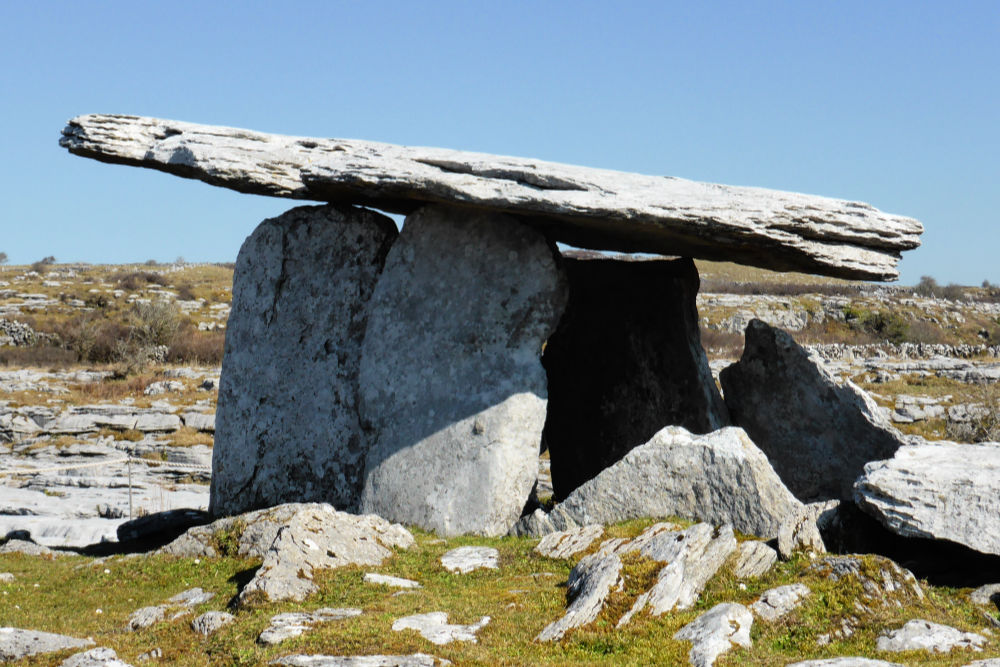
Visitors will also be able to get a taste of Ireland’s wild beauty along the “Wild Atlantic Way” scenic drive where they will see rocky cliffs that plunge into the icy Atlantic or the unforgettable landscape of the Burren.
Whether you’re visiting for a weekend, a week … or longer, here are eight great places to visit in Western Ireland to experience the best the region has to offer as recommended by fellow travel bloggers and us.
ARDARA
Ardara (pronounced ‘Ardra’) is located in the southwest of Donegal and it is one of five designated heritage towns in Donegal County. It is almost a quintessential Irish town with a lovely Guinness brown river flowing through it. Over 12 pubs and bars are there to greet you with traditional music
Ardara is well known to musicians thanks to an outstanding musical heritage. It plays host to one of the best music festivals in Ireland The Cuppa Tae Traditional Music Festival which is held early in May.
One of the most famous pubs in Ireland, Nancy’s, has been in the family for over seven generations the food is superb and Nancy’s hosts some of the finest musicians in Ireland.
Donegal is known for its distinctive fiddle style which developed due to its closeness to Scotland. The Donegal style of traditional music has been deeply influenced by Scottish fiddle music and you won’t hear much of it outside of Donegal. Ardara is home to some of Donegal’s finest fiddlers and the town draws in thousands of tourists a year for its musical festivals and traditional music pubs.
Nestled near the Owenea River where the water rushes over a small waterfall and you can see the salmon jumping. Ardara is close to both the ocean and the mountains of the Glengesh Pass.
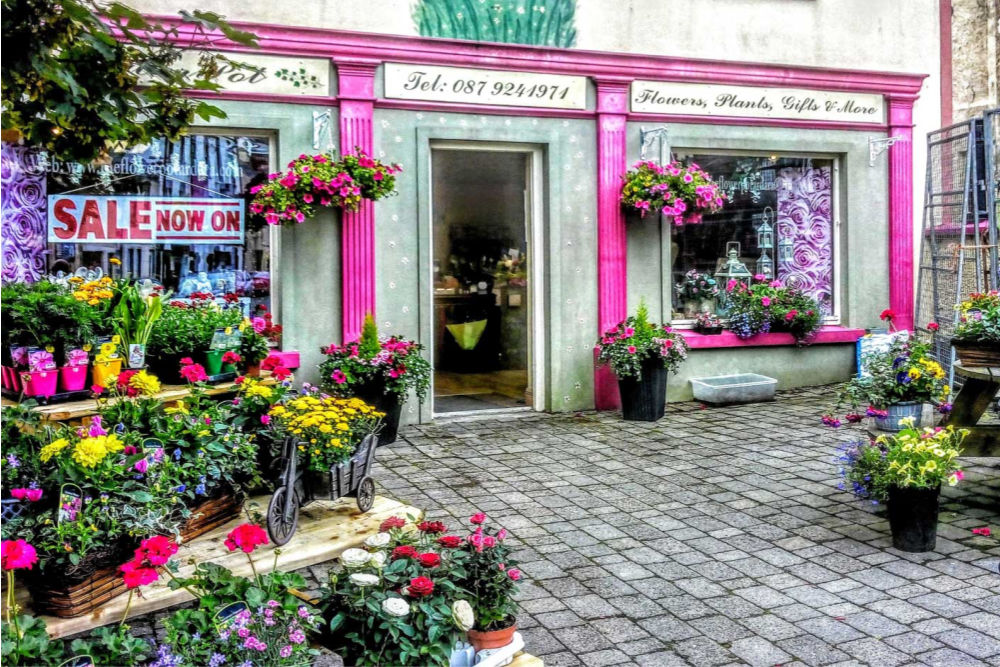
MUST DO IN ARDARA:
- Swim under a Waterfall: On the outskirts of Ardara, a must-see is a waterfall called Assaranca where you can actually swim in the small basin below the falls.
- Kayak Through Maghera Caves: The Maghera Caves are located beneath Slievetooey Mountain and you can get to them from Maghera Strand. A brilliant way to see these caves and tunnels is by taking a kayak tour of the waters. You will see thousands of years of history layered in these rocks.
- Visit an Ancient Dolmen Tomb: Nearby you will also find the Kilclooney Dolmen tombs which date back 3500 years. It is located on private land but you can park and walk to the Dolmen, just remember to close the farm gates on your way in and back.
Recommended by Faith at XYU And Beyond
Read Reviews for these Sights: Assaranca Waterfall | Maghera Caves | Kilclooney Dolmen Tomb
GALWAY
Galway is a charming Irish city located in the western Ireland province of Connacht. Recently named the European Capital of Culture for 2020, adding a visit to Galway on your trip to the Emerald Isle is a must. It’s just two and a half hours from Dublin and nearby many of Ireland’s top attractions such as the Cliffs of Moher and the Burren.
Whether you’re taking a day trip from Dublin or spending a few days in Galway, it is definitely worth a visit during your trip to Ireland.
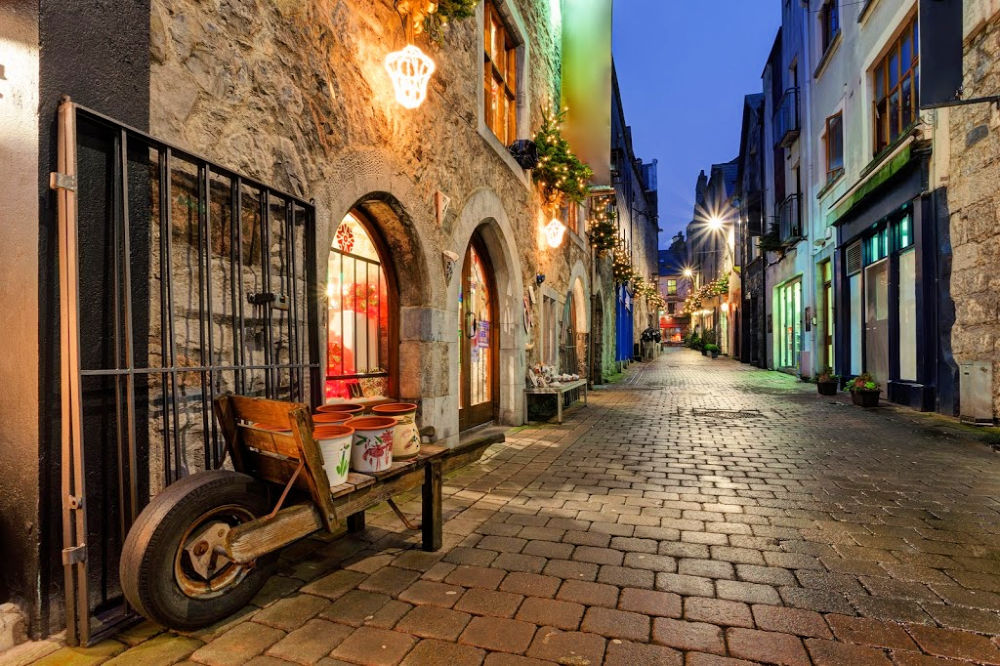
MUST DO IN GALWAY:
- Wander around Galway’s City Center: Galway is a compact and very walkable city, so one of the best things to do in Galway is to just wander around and explore! Visit the Latin Quarter, home to the city’s famed Spanish Arch and a host of old-fashioned Irish pubs. Stroll along Quay Street, the city’s main pedestrian promenade, where you can find fun, trendy shops and tons of street entertainers. Lastly, make sure to visit Eyre Square, the city’s main plaza.
- Visit Galway Cathedral: On first glance, you may think that Galway Cathedral is hundreds of years old; in reality, it was completed in 1965! Though modern in comparison to cathedrals elsewhere in Europe, Galway Cathedral is worth a visit to admire its beautiful stained glass windows.
- Explore the Galway City Museum: Learn about the history of Galway by visiting the Galway City Museum, one of the top attractions in the city. Here, you’ll learn more about Galway’s past including its involvement in the Great War, the marine life in the waters along Galway’s shore, and more. Best of all? Admission is free!
Recommended by Sydney of A World in Reach
Read Reviews for these Sights: Latin Quarter | Galway Cathedral | Galway City Museum
KILLARNEY
The town Killarney, with only 15,000 inhabitants, is located in the south of the island in County Kerry and one of the most beautiful places in Ireland. The city centre is very small and walkable, with cute souvenir stores as well as traditional Irish pubs and restaurants along the streets. Yes, Killarney is certainly touristic to some extent – however, not in a bad or trashy way (at least in my perception).
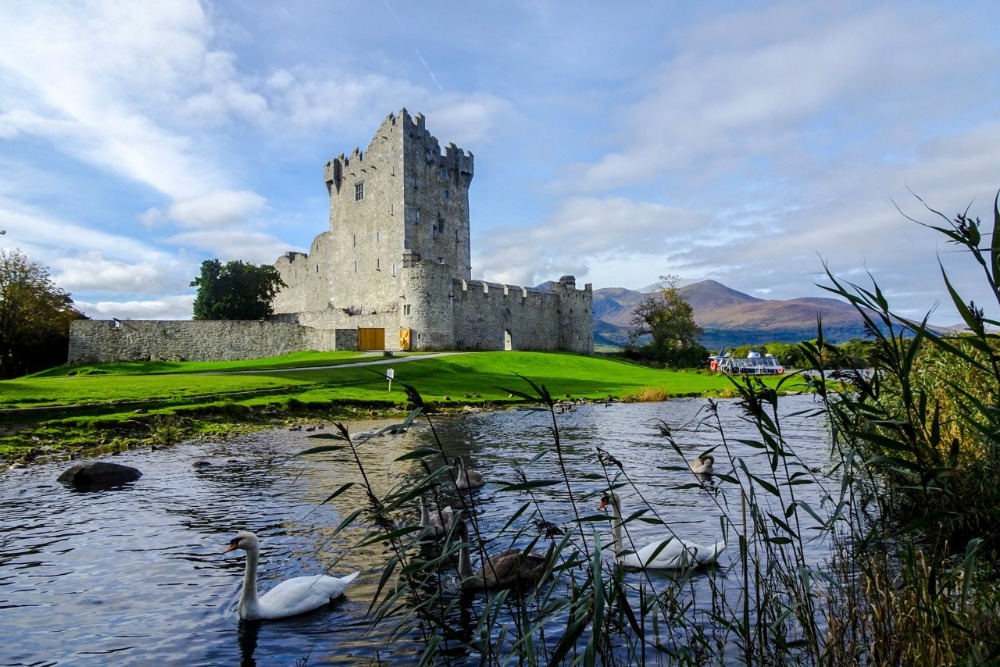
MUST DO IN KILLARNEY:
- Killarney National Park: This beautiful national park is just outside of the town and the perfect escape into Ireland’s nature. The rivers, valleys and lakes of the park are beautiful, and you should give yourself some time to explore it. One place you shouldn’t miss is Ross Castle. Built in the 15th century, Ross Castle is located next to Lough Leane and a beautiful picture spot (see picture above).
- Muckross House: This beautiful mansion has to be one of the most picturesque buildings of Ireland and is just outside of Killarney, at the beginning of the national park. Go for a walk around the gardens of the mansion – it’s easy to see why tourists love this place so much!
- Ring of Kerry: Killarney is the perfect base to drive around one of Ireland’s most scenic roads, the Ring of Kerry. You’ll pass by the rough coastline and small fishing villages, with incredible views wherever you look.
Recommended by Patrick of German Backpacker
Read Reviews for these Sights: Killarney National Park | Muckross House | Ring of Kerry
READ MORE: A Guide to Visiting Ross Castle
CLIFDEN
Clifden is a small coastal town situated along Ireland’s wild coastline northwest of Galway. Clifden has an agriculture and fishing economy, and it’s notable for being the site of Guglielmo Marconi’s first wireless transmission station.
But the true appeal of Clifden is its lovely, hilly location overlooking the town harbour and the Atlantic Ocean. They also rival Dingle and Doolin with their trad music scene. The town makes for a great stop on an Ireland road trip or as a base while exploring the Connemara region.
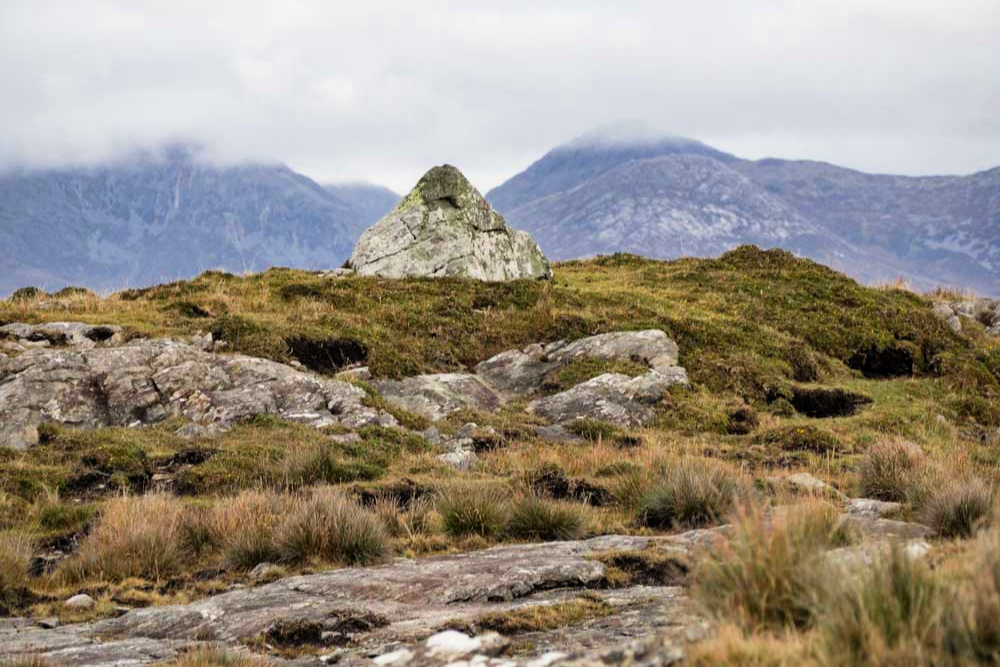
MUST DO IN CLIFDEN:
- Take your drive from Galway to Clifden as slowly as possible: The fast way from Galway to Clifden will only take an hour and a half. But taking the fast road misses the point. Rather, take the whole day and drive the winding Wild Atlantic Way coastal route, using these tips for how to make the most of driving in Ireland.
- Take a hike to the Marconi Transmission site: You’ll get informed about the region’s history and get some exercise at the same time. There is a beautiful 5.5 km loop trail through the Derrigimlagh bog, which includes information about Marconi as well as 6,000 years of carbon peat, dozens of sheep and great views of the 12 Bens mountains.
- Drive the Clifden Sky Road: This 12 km loop road goes up the nearby cliffs, offering dramatic views from one of the westernmost points in Ireland. On a clear day, you can practically see Canada! Be aware though, some of the guide books recommend walking this route, but it’s not very pedestrian-friendly.
Recommended by Carol of Wayfaring Views
Read Reviews for these Sights: Wild Atlantic Way | Marconi Transmission Site | Clifden Sky Road
DOOLIN
The home of traditional Irish music, Doolin is the perfect place to visit to see varied landscapes and ancient monuments before returning for some live music and a pint at one of the local pubs in the evening.
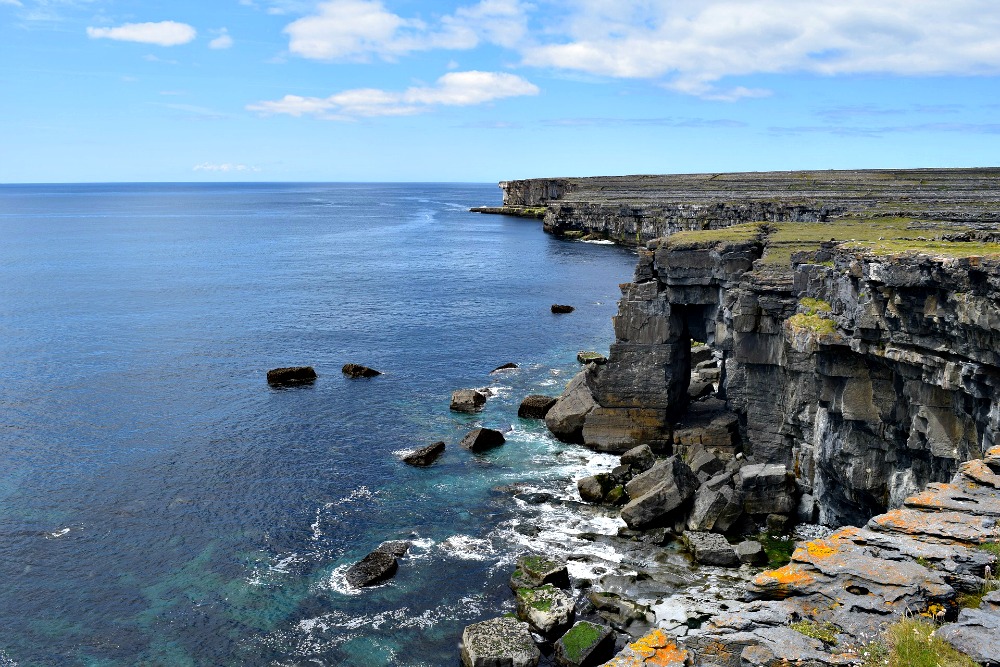
MUST DO IN DOOLIN:
- Admire the Cliffs of Moher: Though you could walk the entire 18 km Cliffs of Moher Coastal Walk, most people will probably only visit the section near the visitor centre where you can witness the iconic image of the almost geometric cliffs rising vertically from the Atlantic Ocean.
- Take a Ferry to the Aran Islands: Taking some time to visit at least one of the Aran Islands is well worth the day. Whether to explore the ancient cliff fort, Dun Aonghasa, which dates from 1500BC, or to visit the peculiar natural wonder at the Wormhole, a rectangular pool which fills and empties with the swell of the ocean, or get warm and snuggly in your own Aran jumper for those chilly nights.
- Drive across the Burren: Entering the Burren is an otherworldly experience as the green of Ireland gives way to a rocky, desolate landscape with only clumps of thin vegetation. With only occasional Dolmens breaking up the landscape of limestone rocks you’ll see why it was given the Gaelic name Boirinn which means a rocky place.
Read Reviews for these Sights: Cliffs of Moher | Aran Islands | The Burren
SLIGO
Meaning ‘abounding in shells’ from the Gaelic Sligeach, Sligo is the second biggest town on the west coast of Ireland. The name comes from the abundance of shellfish to be found in the river Garavogue which the town straddles.
Sligo was founded by the Normans but was lost to native Irish control and stayed as such for most of the medieval period despite numerous attempts by the Norman’s to retake it.
Today the town is a great place to stop on the Wild Atlantic Way or use as a base to explore some of the surrounding area.
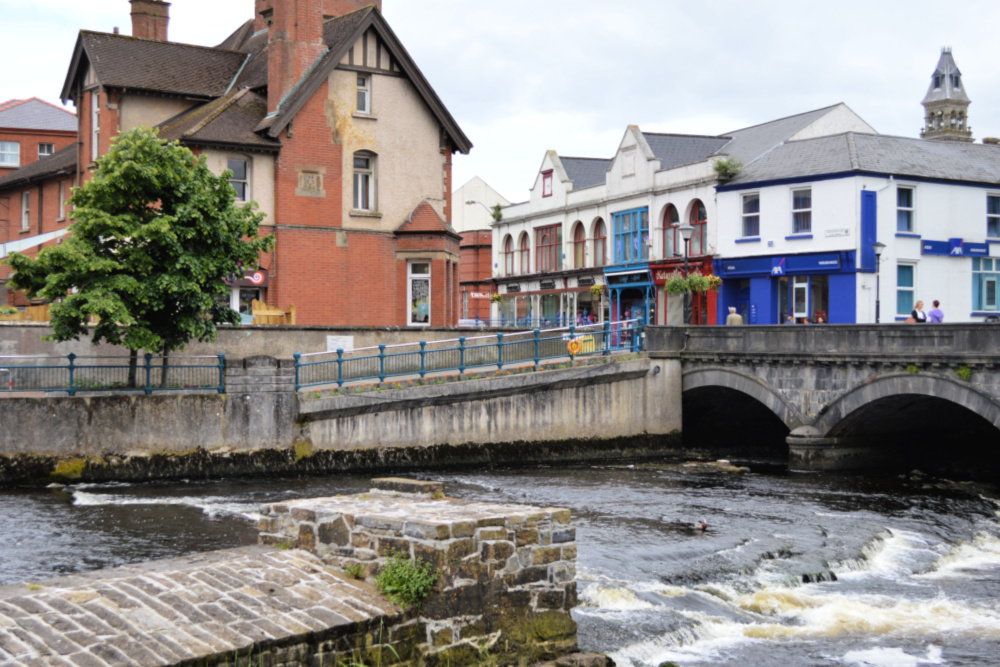
MUST DO IN SLIGO:
- Sligo Abbey: Founded in 1252 Sligo Abbey was built for the Dominicans by Maurice Fitzgerald. After being burnt down in 1414 by a candle, it suffered further damaged by the 1641 rebellion. The abbey’s silver bell is said to have been thrown into Lough Gill where only those who are without sin can hear it ring. The ruins contain many carvings and sculptures including the only 15th-century high altar to survive in Ireland.
- Carrowmore Megalithic Cemetery: Dating back to between 5 and 6 thousand years ago, Carrowmore contains over 60 tombs, 30 of which can be seen. Many of the tombs face the central area which contains tomb 51 or Listoghil which is by far the largest of the tombs at 34m in diameter.
- Devil’s Chimney: This 150m (492 ft) waterfall is Ireland’s highest, its name in Gaelic is Sruth in Aghaidh An Aird which means ‘stream against the height’. When the wind blows from the south, the water can be blown upwards and back over the cliff, because of this it became known as Devil’s Chimney.
Read Reviews for these Sights: Sligo Abbey | Carrowmore Megalithic Cemetery | Devil’s Chimney
DINGLE PENINSULA
Dingle is the name of both the picturesque peninsula that is Ireland’s westernmost point jutting out into the Atlantic Ocean and its colourful main town.
The area is full of charm, ancient ruins, fishing boats unloading their fresh catches daily, traditional pubs with roaring fires, and artisans selling their unique creations.
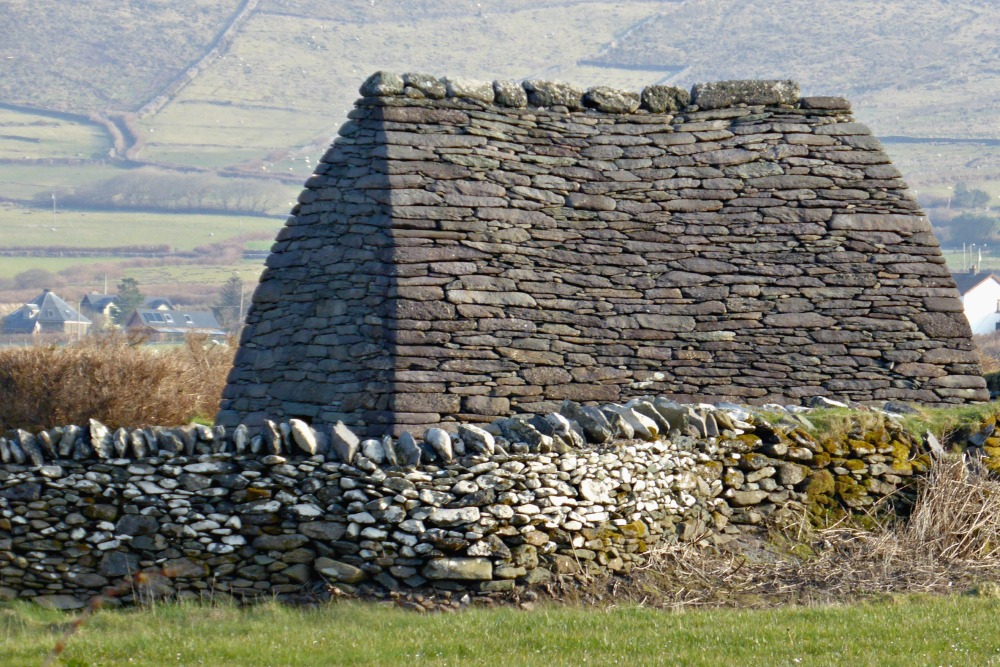
MUST DO ON THE DINGLE PENINSULA:
- Take a Boat Ride to See Fungie the Dolphin: Boats leave the pier in Dingle town daily for 1-hour trips to see the town’s most famous resident, Fungie the Dolphin. In 1983 this bottlenose dolphin swam into Dingle Bay and now visitors can take a boat ride out to see this dolphin who seems to like human company as much as humans like his. He’s now an important part of the local economy and there is even a bronze statue of him outside the tourist office!
- Beehive Huts: At one time there were about 400 of these stone, corbelled huts along the hillside but today there is only a handful, such as the Fahan Beehive Huts (also known as Caher Conor) which are thought to date from the 12th century. It’s very interesting to wander amongst the cluster and you can also go inside to really get a good view of the layers of stone that become smaller and smaller until it is just a small opening at the top to cover with a capstone.
- Gallarus Oratory: Dating from between the 7th and 8th centuries this little stone chapel is from very early Christian times and is one of Ireland’s most beautiful ancient buildings. It was built without mortar using local stones, yet remains dry inside and in remarkable condition despite the Atlantic winds and rains that have blown against it for the past 1,300 years. There is a visitor centre at the site that presents an audio-visual presentation (for a small fee) or you can simply stroll quietly around the site for free.
Read Reviews for these Sights: Dingle Boat Tours | Beehive Huts | Gallarus Oratory
CONNEMARA
The coast of the Connemara Peninsula is a delight just waiting to be explored by visitors – especially those looking for scenic hiking and biking trails. It’s a kaleidoscope of rusty bogs, shimmering lakes, and pretty valleys with the pewter-coloured peaks of the Twelve Bens mountain range at its heart.
This region is also one of the most important Gaeltacht (Irish speaking) areas of Ireland and is home to the country’s national Irish-language radio station (Radio na Gaeltachta). This is helping spoken Irish enjoy a renaissance around the country and you’ll find many signs in this region are in Gaelic only. But don’t look for Connemara on the road signs, as you might be hard-pressed to find them. Connemara isn’t a city or county, but rather a region. The boundaries might be a bit hazy, but you’ll know when you find it with is dark bogs, tall jagged mountains, and glassy lakes dotted with green islands.
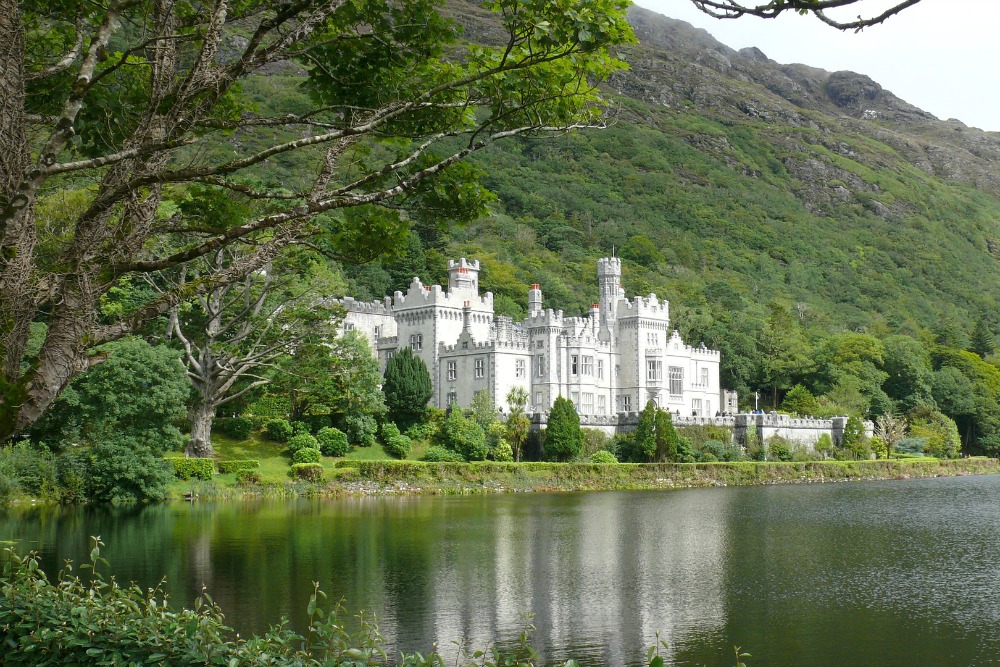
MUST DO IN CONNEMARA:
- Connemara National Park: Encompassing almost 5,000 acres (2,000 hectares) of mountains, bogs, grasslands, and hiking trails, this national park offers visitors great hikes and awesome views. Hiking trails lead to things such as the peaceful Gleann Mόr (Big Glen), the breathtaking Killary Fiord (the only fiord in Ireland), and four peaks of the Twelve Pins mountain range. There is also an informative visitor centre with exhibits on the local natural history and its flora and fauna.
- Kylemore Abbey: This beautiful 19th-century neo-Gothic abbey is nestled at the base of a wooded hill next to the mirror-like Kylemore Lake making it arguably one of the prettiest places in Ireland. In 1920 it was donated to the Benedictine nuns and it’s been a convent boarding school ever since. Visitors can see a bit of the interior, but it is the exterior, the Gothic chapel, and the Victorian walled gardens that are the real attraction and make it worth a visit, especially when driving along the scenic Pass of Kylemore.
- Aughnanure Castle: The Aughnanure Castle is a sturdy 16th-century fortress that is situated on an outcrop of rock surrounded by forest and pasture. It is a well-preserved Irish tower castle with a double bawn (fortified enclosure) and watchtower visitors can climb for great views of the surrounding area and the Drimneed River.
Read Reviews for these Sights: Connemara National Park | Kylemore Abbey | Aughnanure Castle
Want to save this for later? Click the Pinterest button on the left for a pinnable image!
RESOURCES | PLAN YOUR TRIP TO IRELAND
To book flights, rental cars, accommodations, and activities for your trip, please check out our recommended travel providers, favourite apps and websites.
- Dingle Peninsula Loop Trip: A kilometre-by-kilometre self-guided driving or cycling tour.
- Ireland’s Best-Loved Driving Tours: Includes 25 driving itineraries all over Ireland including “Beehive Huts & Coastal Splendours” around the Dingle Peninsula.
- Fodor’s Exploring Ireland: Includes “The Grandeur of the Dingle Peninsula” driving route.
- Rick Steves’ ‘The Best of West Ireland: Dingle, Galway, and the Aran Islands‘ episode of
TV show (whole episode) - Rick Steves Audio Europe App: With this
app you can listen to many excerpts from his radio shows and books. He has several that mention the Dingle Peninsula.
These are a few tours we would recommend for your trip to Western Ireland.
Some of the links in the post above are affiliate links. This means if you click on the link and purchase the item, we will receive an affiliate commission but this does not affect the price to you. Please read our full disclosure policy here.
